In our Weekly Roundup last week we covered news from Auckland Transport that the WX1 Western Express is going to get an upgrade next year with double decker electric buses. As part of the announcement, AT also said
“Since we introduced the WX1 Western Express last November we have seen fantastic growth on this frequent bus route which connects Westgate with the city centre, carrying more than 275,000 passengers so far.
“In recent months we’ve also seen more people using buses in all parts of West Auckland than before Covid-19. In the Westgate/Massey area patronage is about 25% higher and in Te Atatū it is about 30% higher.
Included with the press release was some more detailed statistics so I thought it was worth sharing these.
Journeys
AT say that Journeys have increased. This is important as journeys are a better reflection of use than boardings.
‘Journeys’ cover both direct trips, and trips involving transfers made within a 30-minute window. The data covers selected West Auckland public bus routes, excluding the Western Line Rail Bus and school buses.Across February, people made more trips using the West Auckland bus network compared to previous years. The numbers are shown in Figure 1, while the percentage changes are summarised in Table 1.
A 5% weekday increase on pre-COVID numbers is pretty good given that overall, PT in Feb was still below pre-COVID numbers. There are however a few concerns I have with these numbers.
- AT seem to still have weird mode-specific silos and these numbers only include buses. It would be more useful to understand total PT journeys as there’s a good chance some of this is people shifting from trains to buses, especially due to the epic levels of train unreliability in February. And what about the ferries from Hobsonville Point and West Harbour?
- February this year also saw universities starting earlier. In both 2019 and 2020, semester one started on 4-March and 2-March respectively whereas this year it started 26-February. Given there was about a 10% boost in regionwide usage because of universities, how much of impact did this have?
The weekend/public holiday usage being up does reflect what we’re seeing across the wider network, though the percentages for the west are a bit higher.
AT have also broken the changes down by suburb.
A spatial distribution of the changes is shown below in Figure 2, comparing February 2024 to February 2020. Increases have been seen across the region. Table 2 provides the numbers for context, given that some of the largest increases came from suburbs with a low base.
Note the following:
Figure 2: Percentage change in journeys by suburb – February 2024 vs February 2020
- Any journey that starts or ends in a particular suburb is attributed to that suburb.
- The figure for Te Atatū captures both Te Atatū Peninsula and Te Atatū South – the suburb boundary cuts across the Te Atatū Bus Interchange unevenly so could produce misleading data.
- While Westgate shows as a separate suburb on the map for easier visualisation, the numbers for Massey cover both Massey and Westgate
As a point of reference, Figure 3 overlays selected West Auckland bus routes onto the map of selected suburbs
Transfers
AT also have included data about transfers.
Te Atatū Bus Interchange is the busiest of the three West Auckland bus interchanges, with a weekday average of 1061 transfers across February. The most popular transfers by far were between WX1 and 13 buses, averaging around 500 transfers per weekday between the two routes.
Lincoln Bus Interchange was slightly less busy than Te Atatū, with a weekday average of 907 transfers across February. The 14 and 145 bus routes were both popular transfers from the motorway-running buses
The average weekday transfers were lower at Westgate, at 420 per day. This is not unexpected – the stops are more spaced out in the area and it is the furthest of the interchanges from the city centre. The most common transfer was between the WX1 and the 125, accounting for journeys that previously may have been made on the 125X.
Journey Times
Finally they’ve shared some average journey times for some trips, noting that where transfers are involved, they’re included in the journey time.
Te Atatū Bus Interchange to Rainbow Bridge: WX1 vs 11T/W
Inbound (to Rainbow Bridge)
- Average journey time on WX1 – Weekday Peak AM: 22 minutes
- Average journey time on 11T/W – Weekday Peak AM: 26 minutes
Outbound (to Te Atatū)
- Average journey time on WX1 – Weekday Peak PM: 18 minutes
- Average journey time on 11T/W – Weekday Peak PM: 27 minutes
Google suggest that at the height of the morning peak this journey would take 22-50 minutes and take 9 minutes off peak
Te Atatū Peninsula Library to Rainbow Bridge/Karangahape Road – 13 to WX1 Transfer Journeys
- Average inbound journey time – Weekday Peak AM: 37 minutes
- Average outbound journey time – Weekday Peak PM: 28 minutes
Google suggest that at the height of the morning peak this journey would take 22-54 minutes and take 13 minutes off peak
Henderson Station to Te Atatū Bus Interchange – 13 and 135 Direct Journeys
Henderson Station to Te Atatū Bus Interchange
- Average journey time on the 13 – Weekday Peak PM: 25 minutes
- Average journey time on the 135 – Weekday Peak PM: 20 minutes
Te Atatū Bus Interchange to Henderson Station
- Average journey time on the 13 – Weekday Peak PM: 19 minutes
- Average journey time on the 135 – Weekday Peak PM: 20 minutes
It’s great that AT are showing this level of detail and even better that the changes have already resulted in more usage. We’ve been concerned that the low quality of the interchanges and not enough bus priority would really hurt the WX1 and while it’s still early days, the signs so far are good. The original Northern Express service started out similar to this, with just the Albany and Constellation stations a few years before the busway proper was built. It took that service nine months to pass 275,000 trips compared to just over three for the WX1.
This highlights that people will use better services and so it’s even more important that the route is upgraded to full rapid transit quality as soon as possible. If done so, with a few additional stations it could, in time, easily rival the Northern Busway for usage.

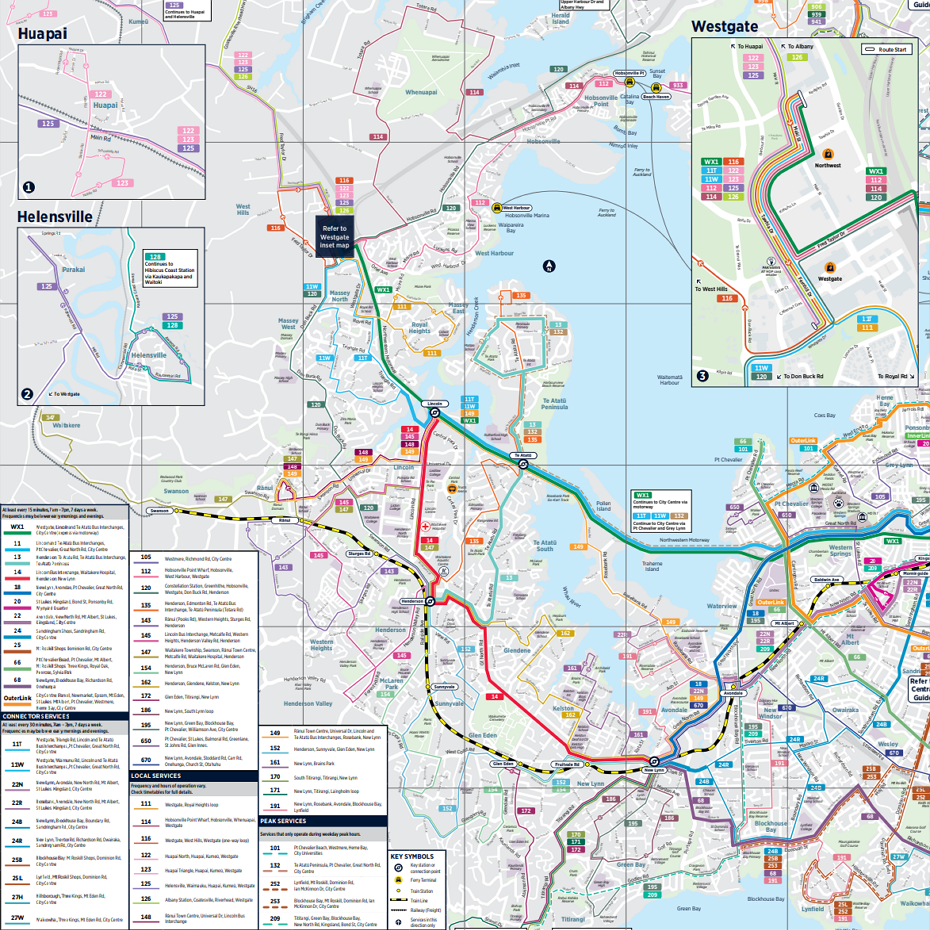


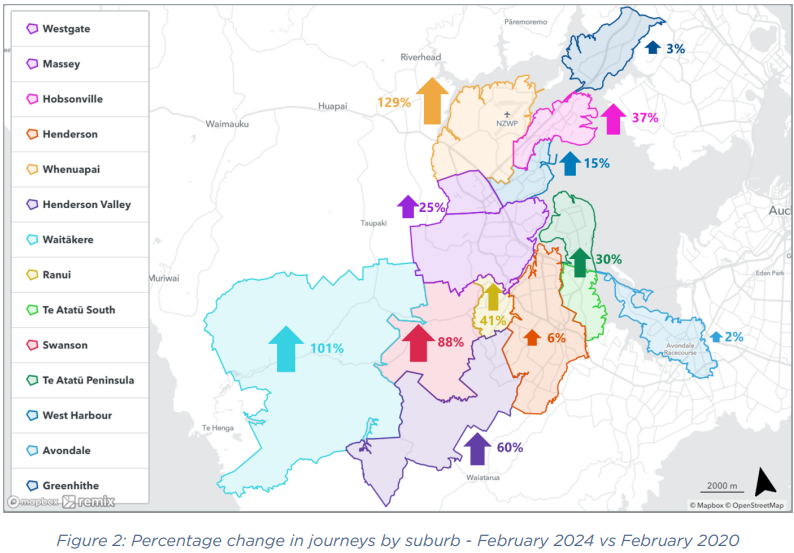

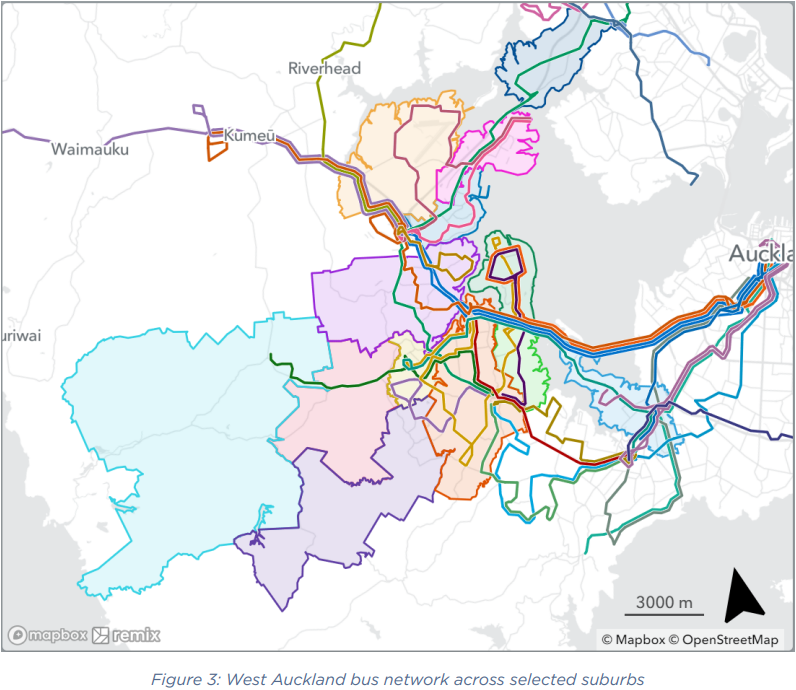
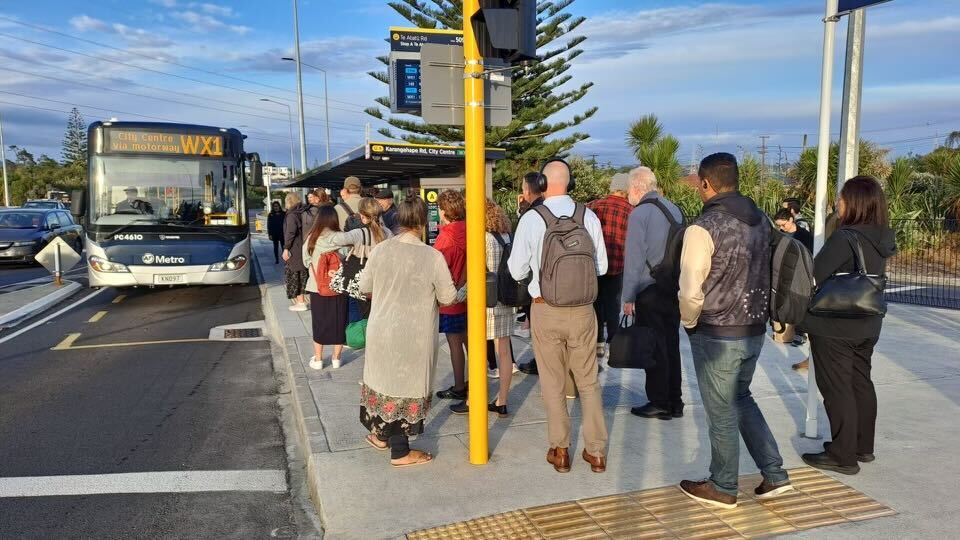
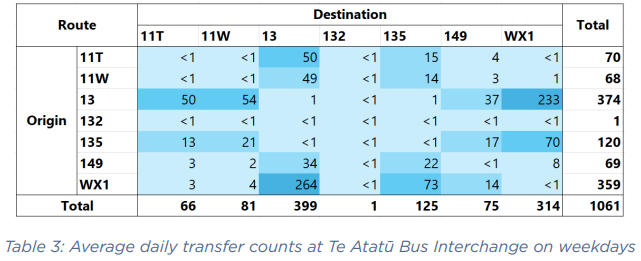
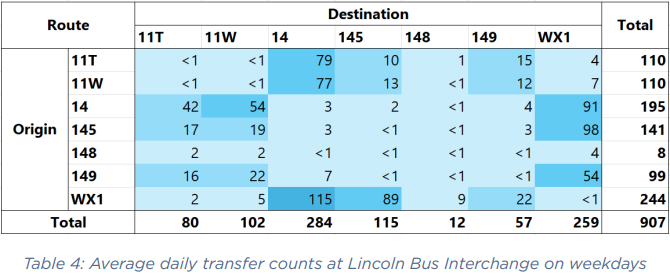
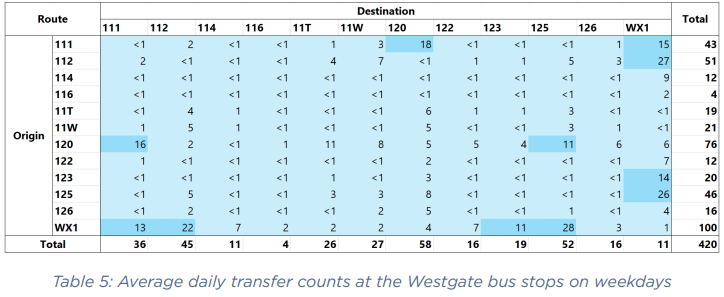





 Processing...
Processing...
There is very little transfer between buses to the Hobsonville Pt Ferry, and virtually none to the West Harbour Ferry. I’m not sure why, but frequency of connecting buses and the plentiful parking available are probably big factors. Catching a bus to/from the West Harbour ferry involves a 12 minute walk down/up a big hill.
If it is anything like the bus connection to the ferry at HMB, the bus will depart just as the ferry is docking, before any passengers have a chance to disembark and transfer to the bus service.
I haven’t caught the ferry recently so unsure if this has been resolved. But it went on for years and years and years when I was a ferry regular.
Not sure if it has changed now but there was free parking at Hobsonville Pt , the bus came with a fare.
I can’t comment on this particular project as I have never used it but it does occur to me that it is a very good approach to developing new routes when you compare it the mega project approach of employing large numbers of planners and their spreadsheets to wonder if and how a new public transport route could be built and implemented. Another example would be the Airport link. Both projects were conceived and implemented in 2 to 3 years not the decades which most projects seem to take. So start small and see what the uptake is then if it works upgrade. So with regards to the Airport Botany boondoggle. There is no reason why we can’t have a bus route with destinations sign saying Airport via Puhinui leaving Botany town center throughout the day. My preference is for it to completely by pass Manukau because I believe there is a relatively uncongested route that it could follow plus there are other buses travelling between Botany and Manukau.
Do we have to be so binary? We need some quick wins, some big projects and some that are in the middle of these 2 extremes. Affordability is also key. Perhaps one day we will have a Government (of any persuasion) that sees things this way?
That is the plan with the botany rapid transit. Before a busway is built running the airport link to botany and then scaling as time goes on. The existing services are stage 1 of that plan.
Sorry put my reply in the wrong place but basically let’s get on with it. Another megaproject which is a complete disaster is the Cook straight ferry replacement. I have completely lost my faith in engineers planners managers and politicians so let’s just keep things small and incremental. I can only hope the CRL works but Friday meltdown on the rail network showed how one signal failure can paralysis the whole network with the relevant people being unable to straighten things out for hours. It will only get worse after the CRL is running.
“I have completely lost my faith in engineers planners managers and politicians”
This new service required all of those people you mentioned in order to be delivered. This didn’t come about organically …
What is not mentioned in those stats is how long the transfers at those interchanges take. Unfortunately during peak the reliability of the WX1, 11T/W and 13 (can’t speak to others, since I don’t use them) is not that great. It’s not unusual for the WX1 to be at the Te Atatū Interchange stop A (towards the city) to be there every 15-20 minutes (despite the alleged 10 min frequency). 11T/11W can be even worse. 13 has a very long route (it’s basically a full loop from Henderson Station) so any delays along Te Atatū Rd lead to issues with punctuality as well. And those stops have very small shelters (particularly the 13 towards Te Atatū Peninsula) so in bad weather is definitely not a great experience.
The new T2 bus lane through Te Atatū South will definitely help but for some reason AT only wants to operate it in the mornings, when in the afternoons that road is also stationary and having T2 in the afternoon would help with buses towards the peninsula.
On the upside – Waka Kotahi (I think) is building a what looks like a separate bus lane on the SH16 onramp towards the city in Te Atatū interchange – that will definitely help.
Overall it feels like a good step, I definitely noticed myself using the service more often, particularly since the evening frequency is significantly better to what it used to be.
Yes agree the issue is that very little priority has been given to the connecting service priority on their routes and the motorway on and off ramps leading to long waits between connections.
The plan for on ramp bus lane https://www.nzta.govt.nz/projects/sh16-te-atatu-on-ramp-bus-only-lane/ says it will function as bus lane between 6.30-9.30 am – not sure if that means buses are not able to use outside that time?
bus lane will be an “emergency stopping lane” outside of peak hours, don’t really understand the harm in leaving it as a bus lane 24/7.
I also thought that was odd at first. It will be time restricted because it links to the motorway bus lane, which also operates 0630-0930.
The more important question is ‘why isn’t the motorway bus lane 24/7?’. It’s hardly like that motorway has a reputation for being free flowing outside of peak hour.
What’s a bit worrying is that on Waka Kotahi pages there’s no project for providing any priority for the buses at Newton Rd and Hobsonville Rd on-ramps.
Yes, that is plain bizarre.
Great to see these numbers, good evidence to push for more bus priority and bus lanes along some of these key routes.
Let’s get cracking AT!
The numbers posted are less than the capacity of a single motorway lane. And that’s for all bus journeys in West Auckland. Percentage increases may look good but it’s perhaps a little early to celebrate when the entire ridership for an area of ~320,000 people is less than a single lane containing cars with one person in them can carry.
Not bad for what is actually less than a full lane.
From the numbers we’re talking every bus in West Auckland combined carrying less people than a single road lane could, not just that ‘busway’.
Not that busways are a bad idea, just that the definition of ‘Success’ here seems a bit premature or optimistic. ‘Fantastic’ growth on tiny numbers is not necessarily the same thing as ‘Success’ especially when the baseline for comparison for the really big percentage increases is based on recovery after covid dropped PT usage, not pre-covid numbers.
You raise some good points but I think well see continued improvement in numbers as little priority measures are implemented. 5% (weekday) improvement from pre COVID is still good when in general we have not recovered from COVID numbers yet.
It’s telling of what a non-congested (ie full bus priority) route could do when the weekend number is 14.9% when there is no congestion generally.
Yes also agree it would be good to see how these numbers fit in with the, as you said, unreliability of train service during this time period. Interestingly only a 2% increase for the Avondale area- when there is now a service that goes to/from Lincoln Rd via Te Atatū.
Probably because it’s (149 bus) not the right direction for peak city flow and too far a detour for most meaningful trips that the older bus setup would not have provided anyway. eg From Te Atatu South people were just using the 138 bus (went via motorway) to get to Avondale, for example.
Plus Avondale itself has the train station of course.
But from Te Atatū and motorway end of Lincoln it is a new service, my daughter has enjoyed being able to get to Avondale without having to go into Hendo or into Pt Chev and back out.
ahh OK, I guess she is part of the 2% then.
Yes my point was that for a new route, and where the buses seem full, that 2% seems low compared to other areas on already established routes. Guess I am questioning the accuracy of their figures
Yes, interesting Swanson did so well up 88%, Lincoln Rd, Interchange, WX1 to city pretty direct and fast I guess generally.
I was thinking the west line rebuild would of affected that figure but not really as “On 10 March, KiwiRail returns to Stage 3a on the Western Line.” was after the February comparison.
I don’t live in Swanson, but as I said below from my experience in the Lincoln Road area, I wouldn’t be surprised if plenty of people who do would prefer the motorway route for travel to the city even assuming both are equal efficient and reliable even post City Rail Loop. (By which I mean the WX1 isn’t getting stuck in traffic etc and both turn up frequently and reliably without a lot of cancellations; and so too for any feeder services etc.)
Focus also needs to be on the route within the CBD, I have sat on the WX1 for 30+ minutes crawling towards the motorway in the afternoon peak. Also, unlike the NX1 which terminates and starts at the same place, WX1 terminates on Queen Street, but for some reason at Vulcan Lane and not the last stop on Queen (even though the bus travels past).
Good to see some numbers. It would also be great to see the suburb bus growth numbers compared to population growth for the same suburbs and also growth in car movements on the norwest for context.
Population has increased about 13% since 2018, which means on the numbers provided the percentage of population pre-covid using weekday buses was still greater than it is today.
And the triple digit percentage increases in ridership are in areas that had double digit levels of bus ridership making for a graphic that looks much more impressive than the underlying numbers. Yes that big giant blue area for Waitakere with a 101% increase in ridership represents 21 more people deciding to get on a bus in each time period.
I think it’s also important to look at how many people are traveling to the city or other areas where the bus route makes sense? Working from home is a lot less than in COVID-19 times and took off in NZ a lot less, and there are a lot of jobs where it’s not possible, but still in a lot of countries there has been a reasonable increase in levels of that even now so I’m assuming it’s the same in NZ. It’s obviously not a bad thing if there are few people needing to travel to the city etc because their job doesn’t require it at least some days of the week. I don’t think it’s even a bad thing if people are taking more local jobs etc provided they aren’t significantly limited in their salary, career fulfillment etc because they are unable to take more distance jobs.
One way to look at this would be to look at motorway traffic which I think is above pre COVID-19 levels but also I think still not that close to what you’d expect given population growth and lack of significant public transport use growth.
This shows the need for modest budget to be kept going (GPS take note!) so that the incremental improvements to bus priority can carry on, building journey time savings and patronage. Meanwhile planning for the separated RTN can follow on in parallel.
The only reason that people are using this bus route is the train line repeatedly being closed. Those bus stope are absolutely terrible.
I suspect there a fair bit of some truth in the frequent Western line disruption leading to people using WX1, but (to be fair to AT) I don’t think it’s the ‘only’ reason. I agree the bus stops are terrible, but revolution (better stops and ultimately a proper Busway) will surely be easier to justify now some benefits of evolution can be seen. I was sceptical myself, but I’m pleased to see how well it is doing (all things considered).
I live in the Lincoln Road area. If I’m heading to the city, even without any closures to worry about on Western Line, I’d probably still take the bus most of the time because it is generally faster. Until the City Rail Loop opens, it’s also more direct for a lot of locations e.g. the university. While train is useful for some things, especially Eden Park and Newmarket and to some extent going south, we cannot ignore the fact because it needs to travel to a lot of catchment areas it tends to take a while compared to travel along the motorway to get to the city. Dwell time reductions and the City Rail Loop will definitely help but ultimately the bus can still be better. I say “can” because the complexity here is while the bus route is much more direct, it’s still not a proper rapid corridor and so the bus can still get stuck in a fair amount of traffic. If this is every improved and the service is made reliable and efficient, there’s a fair chance I’d still be taking that route instead of an efficient and reliable City Rail Loop train for many city journeys. There will still be other journeys where I might take the train, and the train would still be useful for those “closer” (in terms of the line) to the city like Glen Eden, New Lynn, Avondale etc, places which are also further from the motorway too. But I wouldn’t be surprised if my preference holds for many in Swanson too, maybe even Ranui.
Good info they have provided, yet to read it properly but I think journey times right to and from Lower Albert St would of been interesting too. I suspect it would be very prone to congestion at times, so could vary greatly.
Actually data showing the best worst journey times as well and/or more meaningful version than the average. For example, the median (like house prices) or upper/lower quartile or something similar.
Well let’s get on with it and for non public transport users we should provide a direct service because the average uneducated user from the east is never going to understand why they should be taking a tiki tour through Manukau. The only way to improve things is to get people onto a service so they realise that’s it’s not as bad as they thought it was. Who knows if they have a good experience they may decide to use public transport more often.
“because the average uneducated user from the east is never going to understand why they should be taking a tiki tour through Manukau.”
The reason for the tiki tour through Manukua, is to enable that bus route to be able to serve the people who live, work and shop in the Manukau area.
I absolutely love the WX1 service, I use it to get to work and it saves me 1.5 hours every day. I am really impressed.
I had heard a few people say they started in the beginning of the year but jumped back to the car due to the capacity contains at peak. Kinda makes me wonder how many routes are artificially held back from achieving more in this manner.
The data AT use to show usage can also be flawed as a lot of users out west just walk straight past without tagging on, or attempt to tag on and get waved on by the driver. Thus the bus doesn’t show anywhere near as full as it is.
Out of peak there is obviously a lot less demand as there is little incentive without the congestion. It’s generally just PT loyalists/enthusiasts, car-free people or those who have to due to no other option.